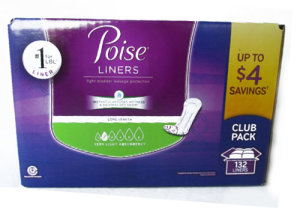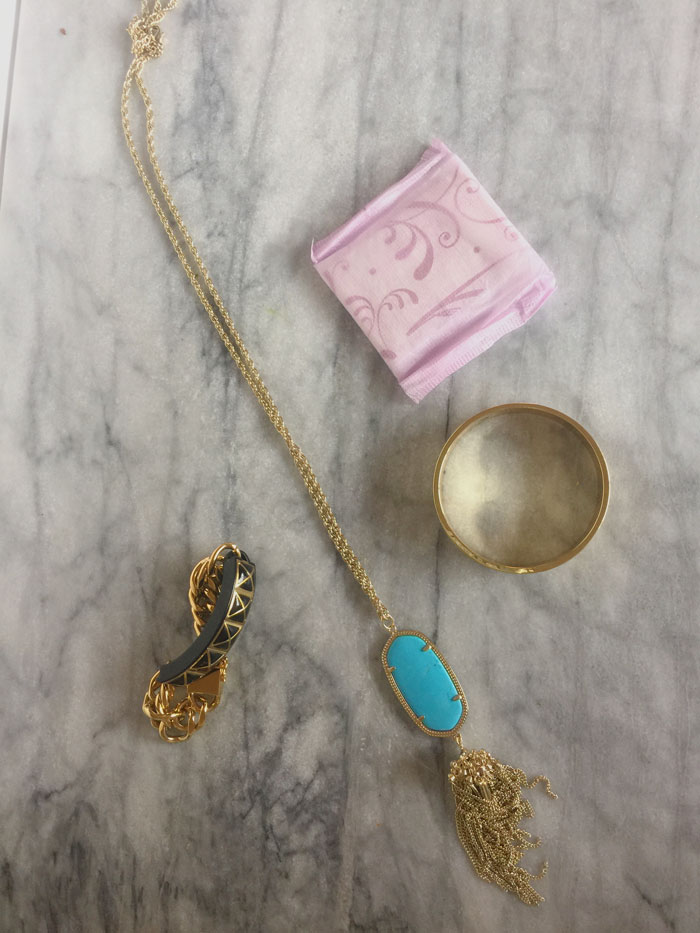Who likes change? I sure don’t love them! The thought of change sometimes is worse than the change for me. I worry about what might happen and it is inevitably way worse than reality. Once the change actually happens, I work hard to make the best of it and and take on life’s changes with a smile.
I have been dealing with the change of LBL since I came home from the hospital with my daughter. All the other changes mostly have just become part of life, but this change is the one that lingers on. I have been doing exercises to remedy the situation and until it is all fixed. I have found Poise Panty Liners that let me participate in the activity without worry of LBL. I can laugh, run & jump around, and even get sick without worrying about it.
I found my Poise Liners at Sam’s Cub. As a member you can save $4 at Sam’s Club! Sam’s Club members also have a Subscription Service with discreet shipping and Club Pickup.
Why Liners are better than Period Pads
- You’ll find SAM (Super Absorbent Material) in all Poise pads and liners. Always period pads can’t say that.
- The Thin-Shape of Poise Liners make them easy to conceal and use everyday.
8 Myths about LBL
Myths and misconceptions about bladder health abound, especially those surrounding leakage after sneezing, surgery, and Kegels, the exercises designed to strengthen the pelvic-floor muscles. What follows are some of the most pervasive myths surrounding bladder health and the reason why they are just that—misconceptions—rather than truths.
Myth #1: If I start and stop my urine flow I will build better bladder muscles.
“Kegels are a good idea, but they shouldn’t be done during urination,” says Roger Goldberg, M.D., director of urogynecological research at the Evanston Northwestern Healthcare in Evanston, Illinois. “Women who repeatedly stop and start their urine stream can develop overactive bladder.”
Myth #2: A little leakage when I cough or sneeze is normal.
While it’s true that leakage is common, “it’s a misconception that bladder leakage is normal or inevitable,” says Goldberg, who is also the author of Ever Since I Had My Baby: Understanding, Treating, and Preventing the Most Common Physical Aftereffects of Pregnancy and Childbirth. “At least 96 percent of women with stress incontinence can have their problem cured. It boils down to this—is it bothersome to the point where it affects your quality of life? If so, there are many options for treatment.”
Myth #3: Bladder leakages only happen to elderly people.
“Stress incontinence affects nearly 50 percent of women who have had children by the age of 40,” says Goldberg. Both stress incontinence and overactive bladder are highly pervasive, he notes, even in younger women.
Myth #4: If I do Kegels, I won’t have any problems, even when older.
“Every woman can benefit from Kegels, as stronger pelvic floor muscles decrease the risk of bladder leakage,” he says. “But for many women, Kegels are not enough to control the problem; they need a backup.”
Myth #5: You should always go to the bathroom when you first feel the urge “to go”—who knows where the next clean bathroom might be?
“Going just in case is fine in certain situations, but for many women, doing this on a regular basis can increase the risk of overactive bladder, with its symptoms of urge, frequency, or accidents on the way to the bathroom,” says Dr. Goldberg. “Spoiling your bladder this way can cause problems over the long run. It’s better to void the normal amount, which is every three to four hours.”
Myth #6: If I have a big problem with urinary incontinence, surgery is my best option.
“For some people, surgery is the best option, but it’s not the best choice for everyone,” Goldberg says. “It’s best to start with an accurate diagnosis in order to rule out other causes of incontinence. In severe cases, however, surgery can be the best option, but it depends on the results of bladder testing.”
Myth #7: I am the only woman in my 20’s, 30’s or 40’s who has this problem.
As stated before, both stress incontinence and overactive bladder are highly pervasive, even in younger women, Goldberg notes.
Myth #8: Pelvic exercises are useful only if you have bladder issues.
“There are lots of reasons to do Kegels, including maintaining pelvic tone and pelvic health,” he says. “In addition, strengthening the pelvic-floor muscles can improve sex and help you avoid pelvic prolapse [a condition where the pelvic organs drop out of position].”
For more information about bladder-health myths, consult your physician and visit www.womenshealthfoundation.org.



